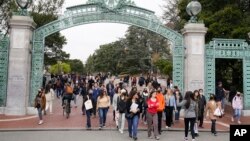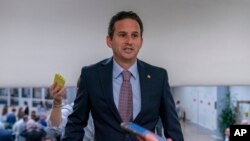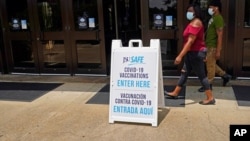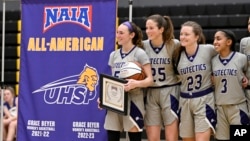Student Union
5 Foreign Songs That Have Influenced American Culture
But right now on college campuses around America, the tables have been turned. One of the most popular songs at the moment is an import from South Korea. It's Gangnam Style, by PSY, which has been making a splash worldwide.
In the U.S., this song has found its way into some quintessentially American institutions, including the U.S. Naval Academy, where a group of students recorded their own take on the music video:
It's even been incorporated into American college sports. Here's the University of Oregon marching band performing Gangnam Style at one of the university's football games.
But Gangnam Style isn't the first foreign song to take over American pop culture. Here are four other non-English songs that have made a big impact on U.S. culture.
Dragosteia din tei, by O-Zone - Romania
Americans will almost certainly recognize this song, but they might know it better as "The Numa Numa Song." This song gained popularity in the U.S. thanks to a viral video of a slightly dorky kid dancing along to it in his bathroom (the kid was Gary Brolsma from New Jersey). According to the BBC, as of 2006 the video had been viewed 700 million times, and the song became a staple at American parties for several years.
Here's the video that set off the trend...
And an example of how it made its way into American culture.
Jai Ho, by A.R. Rahman - India
It's probably no surprise to hear that Americans know this Bollywood song, which was featured in the 2008 movie Slumdog Millionaire and went on to win an Oscar AND a Grammy. A remix by the Pussycat Dolls called "Jai Ho! (You Are My Destiny)" made it into the top 20 of the Billboard charts.
The song also inspired flash mobs across the U.S.. Here's one by the University of Mississippi ("Ole Miss").
While we're on Bollywood songs, Americans would almost definitely recognize, but almost certainly not be able to name, "Mundian To Bach Ke" by British Indian hiphop artist Panjabi MC. Most have heard the version featuring Jay-Z, released in 2003 as "Beware of the Boys."
99 Luftballons, by Nena - Germany
This song by German artist Nena didn't need a viral video or an English language remake to make its way into American pop culture. The song did get an English remake, called 99 Red Balloons, but it was the original German version that rose the U.S. charts in the early 1980s. Today you can still find Americans who don't speak any German, but can confidently sing along to 99 Luftballons.
Here's the song being featured in an episode of "Scrubs" from 2003:
Ue O Muite Aruk? by Kyu Sakamoto - Japan
Ue O Muite Aruk? was probably one of the first-ever foreign songs to catch hold in American pop culture - at least since there have been pop music charts - all the way back in 1963. The song went to number one under the title Sukiyaki. Apparently the title Sukiyaki was chosen for the single's UK release because it sounded Japanese and the original title was too difficult for English-speaking audiences. The song has turned up in U.S. pop music several times since, with a 1981 version by disco group A Taste of Honey, and a sample in a 1985 song by Slick Rick and Doug E. Fresh.
Unfortunately, few young Americans today would recognize this song that made such a splash for their parents.
Here's the original song for your listening pleasure:
See all News Updates of the Day
With federal student aid delays, students aren’t sure what college will cost

The U.S. Department of Education’s federal student aid form (FAFSA) experienced serious glitches and delays this year.
Now, many students have been admitted to college, but don’t know how much money they’ll need to attend.
Read the story from Susan Svrluga and Danielle Douglas-Gabriel for The Washington Post. (March 2024)
Senator draws attention to universities that haven’t returned remains

More than 70 U.S. universities continue to hold human remains taken from Native American burial sites, although those remains were supposed to be returned 30 years ago.
Jennifer Bendery writes in Huffington Post that one senator has been using his position in an attempt to shame universities into returning remains and artifacts. (April 2024)
COVID forced one international student to go hungry

When Samantha (not her real name) enrolled in community college in the U.S., her family at home in South Africa scrimped and saved to support her.
But the COVID-19 pandemic hurt the family’s finances, and at one point Samantha had four on-campus jobs just to make ends meet. Many in the U.S. believe international students are wealthy sources of funding for universities, but stories like Samantha’s suggest otherwise.
Andrea Gutierrez reports for The World. (March 2024)
Tips for paying for a STEM degree as an international student

For US News & World Report, Melanie Lockert describes how to calculate the cost of a STEM degree, and where to find funding. (March 2024)
NAIA all but bans its transgender college athletes from women's sports

The National Association of Intercollegiate Athletics, the governing body for mostly small colleges, announced a policy Monday that all but bans transgender athletes from competing in women's sports.
The NAIA's Council of Presidents approved the policy in a 20-0 vote. The NAIA, which oversees some 83,000 athletes at schools across the country, is believed to be the first college sports organization to take such a step.
According to the transgender participation policy, all athletes may participate in NAIA-sponsored male sports but only athletes whose biological sex assigned at birth is female and have not begun hormone therapy will be allowed to participate in women's sports.
A student who has begun hormone therapy may participate in activities such as workouts, practices and team activities, but not in interscholastic competition.
"With the exception of competitive cheer and competitive dance, the NAIA created separate categories for male and female participants," the NAIA said. "Each NAIA sport includes some combination of strength, speed and stamina, providing competitive advantages for male student-athletes. As a result, the NAIA policy for transgender student-athletes applies to all sports except for competitive cheer and competitive dance, which are open to all students."
There is no known number of transgender athletes at the high school and college levels, though it is believed to be small. The topic has become a hot-button issue for those for and against transgender athletes competing on girls' and women's sports teams.
At least 24 states have laws barring transgender women and girls from competing in certain women's or girls sports competitions. Last month, more than a dozen current and former college athletes filed a federal lawsuit against the NCAA, accusing the sports governing body for more than 500,000 athletes of violating their rights by allowing transgender women to compete in women's sports.
The Biden administration originally planned to release a new federal Title IX rule — the law forbids discrimination based on sex in education — addressing both campus sexual assault and transgender athletes. But earlier this year, the department decided to split them into separate rules, and the athletics rule now remains in limbo even as the sexual assault policy moves forward.
Hours after the NAIA announcement, the NCAA released a statement: "College sports are the premier stage for women's sports in America and the NCAA will continue to promote Title IX, make unprecedented investments in women's sports and ensure fair competition for all student-athletes in all NCAA championships."
The NCAA has had a policy for transgender athlete participation in place since 2010, which called for one year of testosterone suppression treatment and documented testosterone levels submitted before championship competitions. In 2022, the NCAA revised its policies on transgender athlete participation in an attempt to align with national sport governing bodies, following the lead of the U.S. Olympic and Paralympic Committee.
The three-phase implementation of the policy included a continuation of the 2010 policy, requiring transgender women to be on hormone replacement therapy for at least one year, plus the submission of a hormone-level test before the start of both the regular season and championship events.
The third phase adds national and international sport governing body standards to the NCAA's policy and is scheduled to be implemented for the 2024-25 school year on August 1.
There are some 15.3 million public high school students in the United States and a 2019 study by the CDC estimated 1.8% of them — about 275,000 — are transgender. The number of athletes within that group is much smaller; a 2017 survey by Human Rights Campaign suggested fewer than 15% of all transgender boys and transgender girls play sports.
The number of NAIA transgender athletes would be far smaller.






